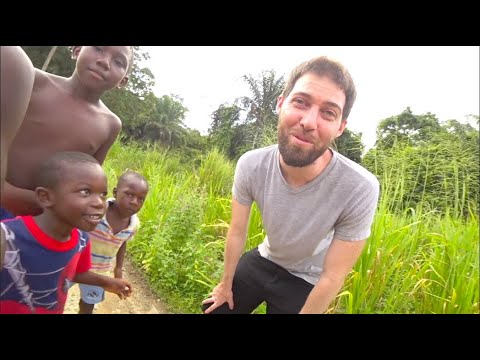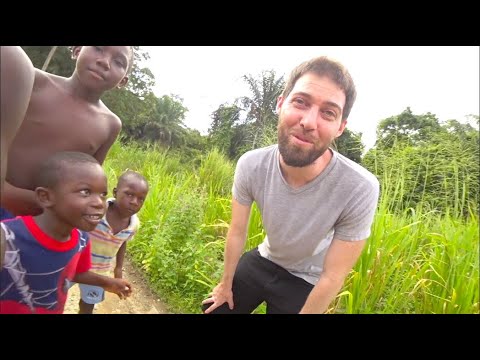Suriname is a fascinating country that combines elements of Africa and South America. Hundreds of years ago, escaped slaves found refuge in the Amazon rainforest, forming new tribes that retained African languages and traditions. These Maroon villages are unique and offer a glimpse into a culture not found anywhere else. As you explore Suriname, you may feel a sense of nostalgia for Africa, especially after traveling through Tanzania, Kenya, Uganda, Rwanda, and Nigeria. Don’t be surprised if you struggle with communication here, as Suriname has a diverse linguistic landscape. While Dutch is the official language, the Maroon villages primarily speak Saramakan, a Creole language with influences from English, Dutch, and West African languages. The strong West African influence even results in the use of tonal speech, reminiscent of the African continent. So, get ready to immerse yourself in the wonders of Suriname’s Maroon culture and experience a little piece of Africa in South America.
Introduction
Suriname is a unique and fascinating country, known for its Maroon villages. These villages were formed hundreds of years ago by escaped slaves who sought refuge in the Amazon rainforest. The Maroons created new tribes that retained African languages and cultural practices, making Suriname a truly African place outside of Africa. In this article, we will explore the background, formation, and significance of Maroon villages in Suriname. We will also delve into the linguistic and communication challenges faced by the Maroons, as well as their way of life and the natural environment they inhabit.

Best Deals to Surinam by BOOKING.COM
Background on Suriname
Location
Suriname is located in South America, bordered by Guyana to the west, French Guiana to the east, and Brazil to the south. It is the smallest country in South America by land area, yet it is incredibly diverse in terms of its people, culture, and natural landscapes.
Historical Context
Suriname has a complex history, as it was once a Dutch colony. The Dutch established plantations in Suriname during the 17th and 18th centuries. These plantations relied heavily on enslaved Africans to work the land. However, many enslaved individuals managed to escape and found refuge deep within the rainforest, far from the reach of plantation owners. These escaped slaves became known as Maroons and formed their own villages, which still exist today.
Maroon Villages
Formation of Maroon Villages
Maroon villages in Suriname were formed by groups of escaped slaves who sought freedom in the dense rainforest. These villages provided protection and a sense of community for the Maroons, allowing them to maintain their African cultural identity and traditions. The Maroons established their own autonomous societies, separate from the Dutch colony, and developed unique ways of governing and organizing their communities.
Language and Cultural Practices
One of the most remarkable aspects of Maroon villages in Suriname is the preservation of African languages and cultural practices. Despite being isolated from their African homeland for centuries, the Maroons have managed to maintain their ancestral languages and customs. African languages such as Twi and other West African languages heavily influence the Surinamese Creole spoken in these villages. Additionally, traditional practices such as music, dance, and storytelling continue to be an integral part of Maroon culture.
Suriname’s African Roots
African Languages in Maroon Villages
The linguistic diversity in Suriname’s Maroon villages is a testament to the African roots of its inhabitants. The Saramaka Maroons, in particular, speak a unique Creole language known as Saramakan. Saramakan is a blend of Portuguese, English, and Dutch, but it is predominantly influenced by West African languages. Tones, which are a characteristic feature of many West African languages, are still present in the Saramakan language, highlighting the deep connection and influence of African languages on Maroon culture.
Maintaining African Traditions
Despite the challenges of living in a new and unfamiliar land, the Maroons have succeeded in preserving many African traditions. From medicinal practices and spiritual beliefs to traditional clothing and artistic expressions, the Maroons in Suriname have kept alive the customs passed down through generations. These traditions serve as a link to their African heritage and serve to strengthen their cultural identity.
FIND YOUR BEST HOTEL IN SURINAM WITH BOOKING.COM
Linguistic and Communication Challenges
Dutch as the Official Language
As a former Dutch colony, Suriname’s official language is Dutch. However, Dutch is not widely spoken in the Maroon villages. This language barrier poses a significant communication challenge for visitors and researchers trying to interact with community members. While some Maroons may have limited knowledge of Dutch, the primary mode of communication among themselves and with outsiders is often their native African-based Creole languages.
Saramaka Language Influence
Among the Maroons in Suriname, the Saramaka language holds immense importance. This Creole language, as mentioned earlier, is heavily influenced by West African languages and plays a vital role in maintaining the Maroons’ cultural identity. Despite its complexity for non-speakers, the Saramaka language continues to be spoken and passed down through generations, reinforcing the African roots of the Maroon villages.
Exploring Maroon Villages
Touring the Last Village (Pokey Grown)
For those interested in experiencing the unique culture of Suriname’s Maroon villages, a visit to the last accessible village, Pokey Grown, is a must. This village, located along the river, offers visitors a glimpse into the daily lives of the Maroons. Tourists can witness traditional practices, interact with residents, and gain insights into the history and customs of the Maroon people.
Interacting with Village Residents
Engaging with the residents of Maroon villages provides a deeper understanding of their way of life. While language barriers may exist, the warmth and hospitality of the Maroons help bridge the communication gap. By immersing oneself in the community, participating in cultural activities, and learning about their customs firsthand, visitors can create meaningful connections and appreciate the richness of Maroon culture.
Life in Maroon Villages
Accommodation and Living Conditions
Life in Maroon villages is characterized by simplicity and self-sufficiency. Accommodations in these villages are often basic, reflecting the modest lifestyle of the residents. Shared spaces, communal kitchens, and modest sleeping arrangements are common. Despite their simplicity, these living conditions foster a sense of community and togetherness among the Maroons.
Dietary Choices
The dietary choices of the Maroons are influenced by their natural surroundings and cultural practices. The rainforest provides an abundance of resources, including fruits, vegetables, and seafood. Additionally, traditional cooking methods are employed, preserving the authenticity and flavors of the Maroon cuisine. Visitors can indulge in local dishes and experience the unique flavors that have been passed down through generations.
The Natural Environment of Suriname
Rainforest Cover in Suriname
Suriname boasts the highest percentage of rainforest cover in the world, making its natural environment a vital component of Maroon life. The dense rainforest offers shelter, sustenance, and a connection to their African ancestors. The Maroons have developed various strategies to navigate and survive in this challenging environment, which has shaped their cultural practices and reliance on the land.
Inaccessibility and Survival Strategies
The remote location and inaccessibility of Suriname’s Maroon villages have played a crucial role in their preservation and survival. The dense rainforest acts as a protective barrier, shielding the villages from outside influences and providing a sense of security. The Maroons have developed strategies and knowledge specific to the rainforest to cultivate sustenance, gather resources, and thrive in harmony with their natural surroundings.
End of the Road: Anchony Dock
Boat Transportation for Villagers
The Anchony Dock marks the endpoint of paved roads in Suriname and serves as a vital transportation hub for the Maroon villagers. Due to the lack of road infrastructure beyond this point, the primary mode of transportation for villagers is by boat along the rivers. This reliance on rivers and boats further emphasizes the interconnectedness between the Maroon villages and the natural waterways of Suriname.
Commercial Activity at Anchony Dock
Anchony Dock is not only a transportation hub but also a center for commercial activity. Villagers from various Maroon communities flock to this area to purchase goods from Chinese-owned supermarkets and partake in other commercial ventures. It serves as a meeting point for trade, social interaction, and the exchange of goods.
Conclusion
Suriname’s Maroon villages stand as a testament to the resilience, cultural heritage, and unique traditions of the African diaspora. These villages, hidden within the Amazon rainforest, have preserved African languages, customs, and ways of life for centuries. Their existence is a reminder of the diverse and rich tapestry of cultures found within South America. By exploring the Maroon villages, visitors can embark on a journey that transcends borders and connects them to the African roots of Suriname, truly making it “the most African place outside of Africa.”
